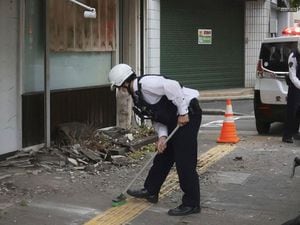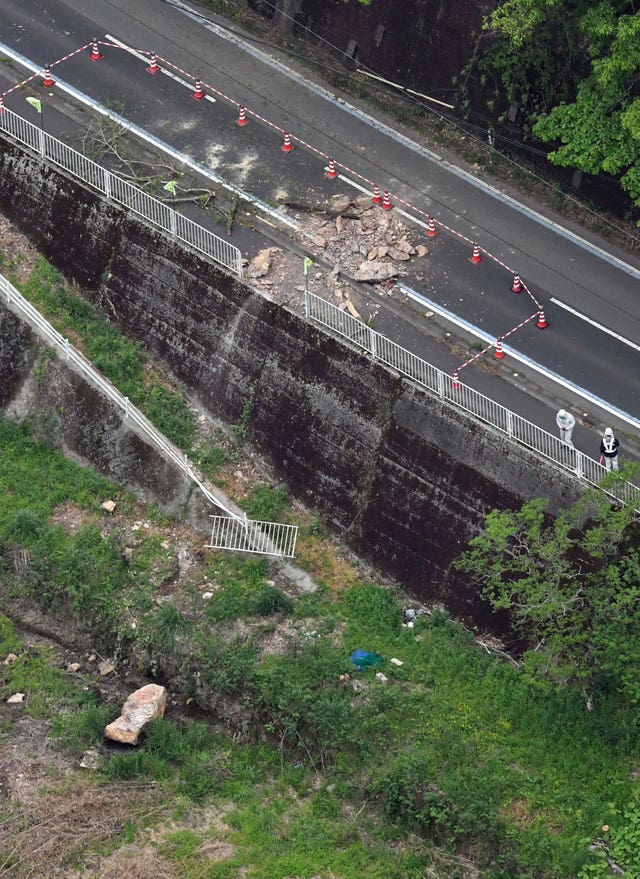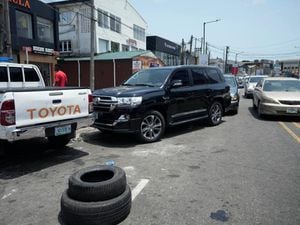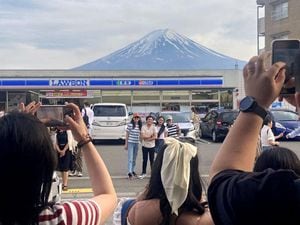Strong earthquake in Japan leaves nine with minor injuries, but no tsunami
The earthquake occurred 30 miles below the sea’s surface and posed no danger of a tsunami, the Japanese Meteorological Agency said.

A strong earthquake that struck southwestern Japan left nine people with minor injuries and caused damages such as burst water pipes and small landslides, authorities said, but there was no danger of a tsunami.
The magnitude 6.6 quake on Wednesday was centered just off the western coast of the southwestern main island of Shikoku, in an area called the Bungo Channel – a strait separating Shikoku and the southern main island of Kyushu.
The earthquake occurred 30 miles below the sea’s surface and posed no danger of a tsunami, the Japanese Meteorological Agency said.

Water pipes were ruptured at a number of locations in Sukumo City in Kochi prefecture, and gravestones collapsed at a Buddhist temple in Ainan town in Ehime prefecture, according to local media reports.
Falling rooftiles were also reported.
The Nuclear Regulation Authority said no abnormalities were reported from four reactors operating at three nuclear power plants in Shikoku and Kyushu.
As part of the Pacific “ring of fire,” Japan is one of the world’s most earthquake-prone areas.
The magnitude 9.0 earthquake and subsequent tsunami in March 2011 devastated large areas along Japan’s north-eastern coast, killing nearly 20,000 people and triggering the Fukushima Daiichi nuclear meltdowns.
On January 1, a magnitude 7.6 quake struck the north-central region of Noto and left 241 people dead.





